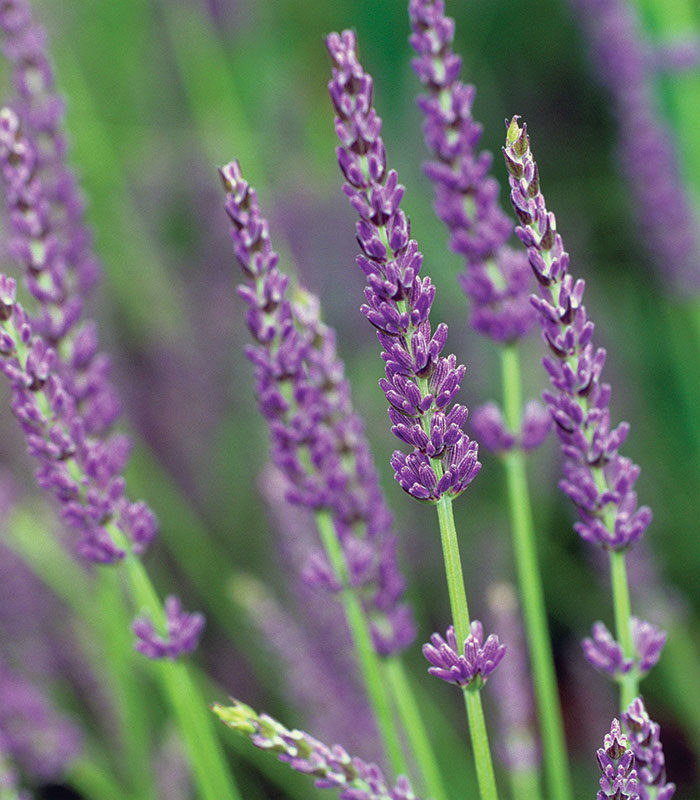
Without a doubt, lavender have always been the most requested plants at our nursery. At times, their popularity seems downright trendy, but plants that have been desired by gardeners for thousands of years obviously have some enduring and appealing traits.
We love the way lavenders smell and the constant hum and flutter of pollinating insects that they attract to our gardens. The evergreen, often silvery, foliage adds year-round appeal, while the splashes of flowers beckon us down summer pathways. They love full sun, deer don’t nibble on them, and they thrive without much water.
So why do some people think they can’t grow lavenders? Of the most popular varieties of lavender—English, Spanish, French, and lavandin (lavender hybrids)—each has unique qualities that make it well suited for certain areas. With proper planning, almost all gardeners can find a lavender variety that will produce great results in their climate.
Basics of Growing Lavender
Name: Lavandula cvs.
USDA Hardiness Zones: 5–8
Size: 1 to 3 feet tall and 3 to 5 feet wide
Bloom time: Mid to late summer
How to Care for Lavender:
Food
Lavenders prefer fertilizer with a nearly equal blend of N-P-K (nitrogen-phosphorus-potassium). Try a mix of two parts chicken manure, which has antifungal properties, and one part kelp meal.
Water
Great plants for dry areas and xeriscaping, lavenders only need regular watering until their roots settle in. After the first year or two, they need little water. Be careful with overhead watering because wet foliage, especially in humid areas, can encourage fungal diseases
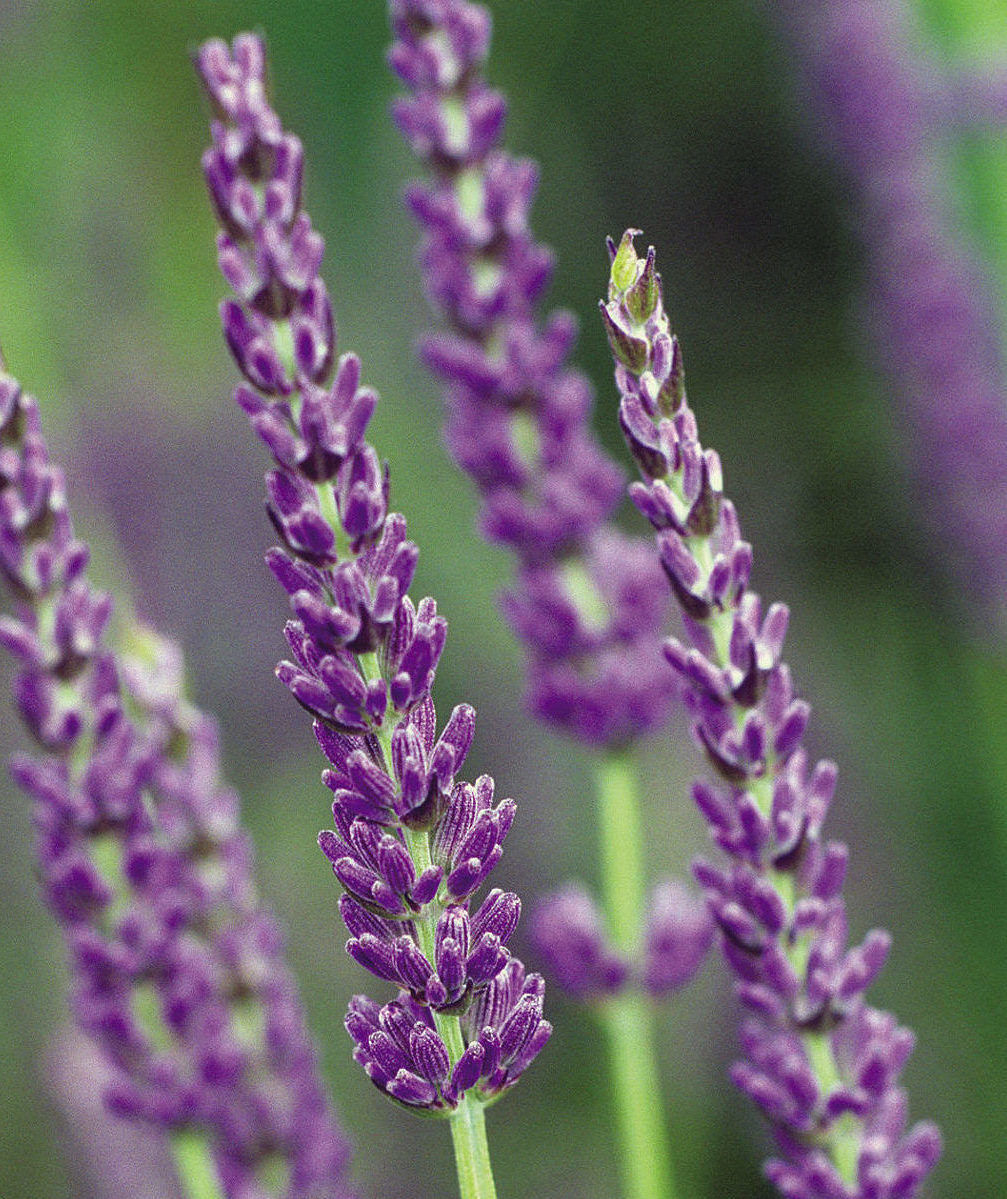
Growing lavender in areas with dry summers
Growing lavenders is easiest in areas with dry summers—an environment similar to their native home in the Mediterranean, which lacks the consistently moist air that defines humid regions (a difficult problem for fungus-prone lavender); it’s even better if you also have warm winters. The combination of dry summers and warm winters gives lavender enthusiasts the opportunity to try most species and cultivars. Some places, however, receive large amounts of winter rainfall and need to have excellent soil drainage for success. Gardeners in these areas may want to try lavenders adapted for humid summers and warm winters—varieties that are more resistant to fungal disease and root rot.
Regions with dry summers and cold winters are more limited in the varieties of lavender that can be grown. English lavenders and lavandins are good options here. Provide them with well-drained soil and good air circulation for the best results. For regions colder than Zone 5, grow lavenders in containers and move them indoors before winter, or insulate around in-ground plantings with fabric or evergreen boughs.
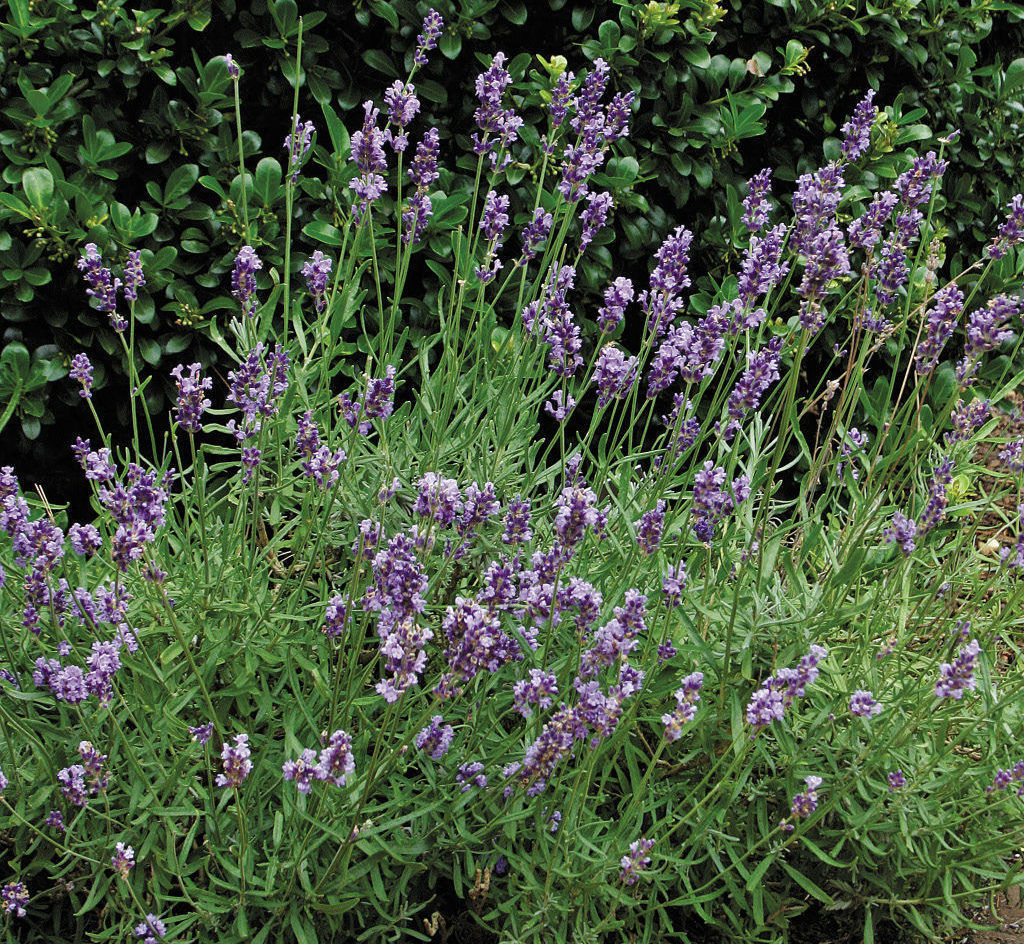
English lavender.
Name: Lavandula angustifolia and cvs.
Zones: 5–8
Size: 1 to 3 feet tall and 2 to 4 feet wide
Bloom time: Mid to late summer
Growing lavender in climates with humid summers
If your summers are humid—so sticky that lavenders stay consistently damp—then you have to be more selective about choosing and caring for your plants. High humidity, combined with summer rain and heat, is the biggest hindrance to growing most lavenders. Fortunately, warm winters give gardeners the option of growing humidity-tolerant French lavenders, French lavender hybrids, and Spanish lavenders. If you’d like to try English lavenders and lavandins (which are more susceptible to fungal diseases), success depends on good air circulation and soil drainage.
If you have humid summers and cold winters, this narrows your selection even further. Areas with the winter temperatures of Zone 8 or cooler can try the hardy French lavender cultivar ‘Goodwin Creek Grey’ (Lavandula‘Goodwin Creek Grey’, Zones 7–11) and Spanish lavenders. English lavenders and lavandins are also possibilities—but, again, soil drainage and air circulation must be excellent; even then, the success and life span of these plants might be limited. Areas colder than Zone 5 may be too cold to grow lavenders in the ground, but you can test the slightly hardier English lavenders if they’re planted in a sheltered location with winter protection or planted in containers to be moved inside when the temperatures drop.
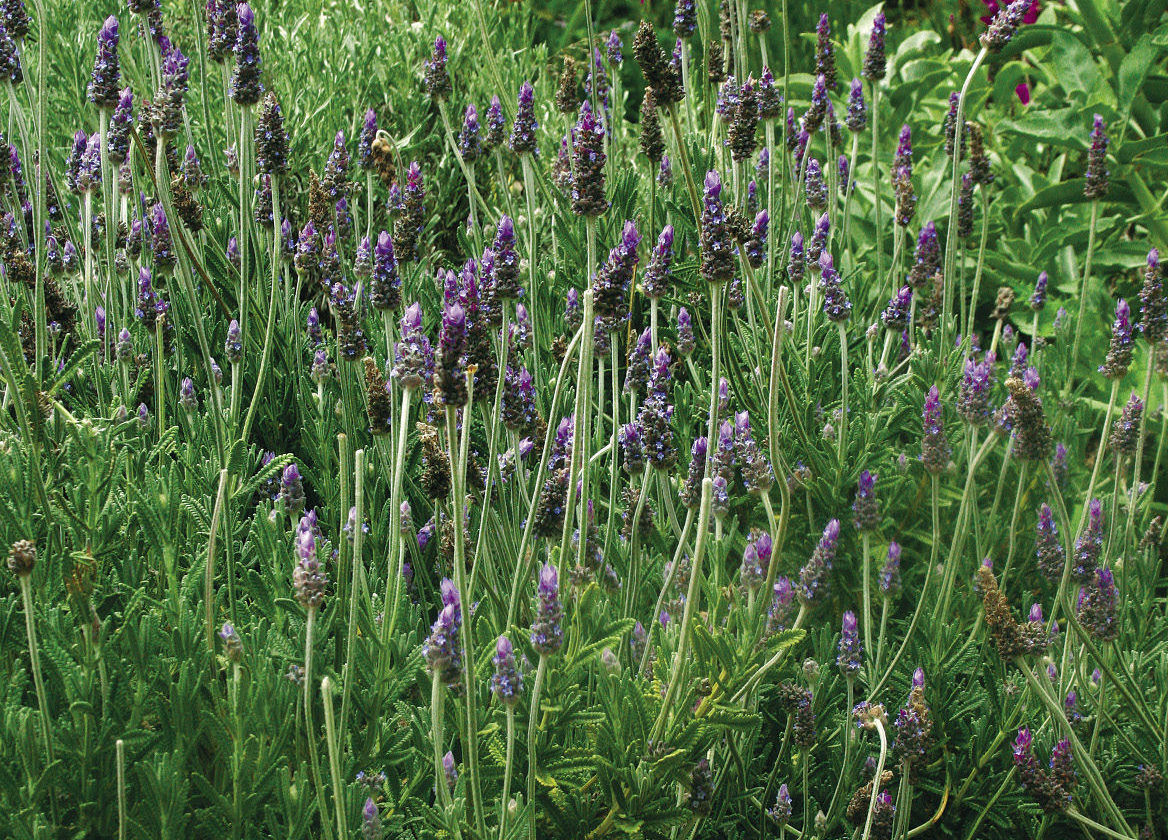
French lavender
Name: Lavandula dentata and cvs.
Zones: 9–11
Size: Up to 4 feet tall and 5 feet wide
Bloom time: Midsummer to fall
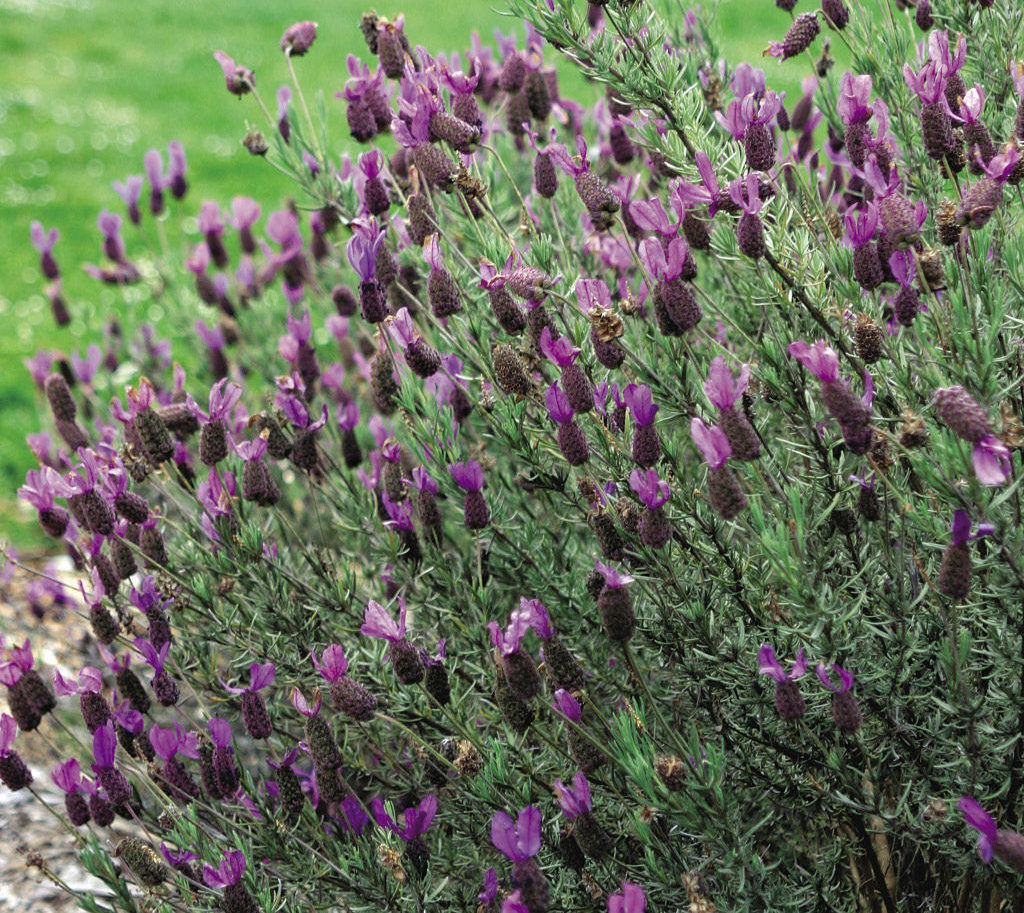
Spanish lavender
Name: Lavandula stoechas and cvs.
Zones: 8–9
Size: 2 feet tall and wide
Bloom time: Late spring to summer
2 Steps to Keep Fungus Off Lavender
One of the biggest mistakes that you can make with your lavenders is not providing them with proper drainage and air circulation. Failure to do so can lead to big problems with lavenders, especially fungal diseases. Follow these simple steps to start your lavenders off on the right foot.
1. Amend your soil
Adding inorganic particulates, like chicken grit, to your soil allows for excellent soil drainage. If your region receives large amounts of rain, you can provide extra drainage by planting in mounds or raised beds
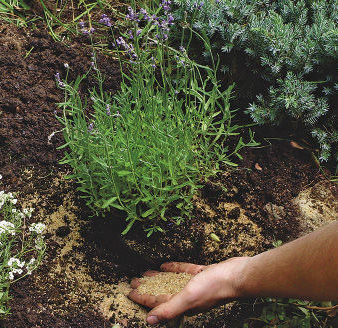
2. Mulch with sand
Avoid moisture-holding organic mulches that create perfect conditions for fungus. As an extra precaution, provide good air circulation by not planting lavenders too close together.
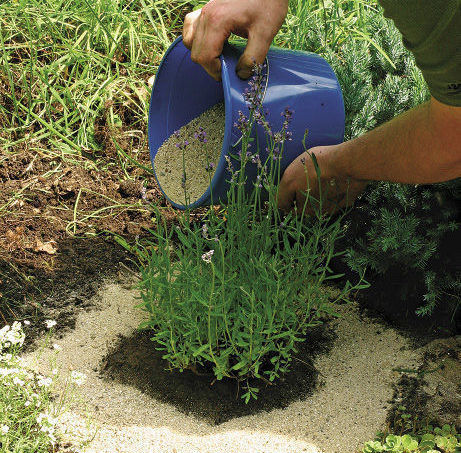
Jim Becker is co-owner and operator of Goodwin Creek Gardens in Williams, Oregon.Photos, except where noted: Michelle Gervais
Sources
- Goodwin Creek Gardens, Williams, Ore.; 800-846-7359; goodwincreekgardens.com
- Pantry Garden Herbs, Cleveland, Mo.; 877-572-4142; pantrygardenherbs.com
- Sandy Mush Herb Nursery, Leicester, N.C.; 828-683-2014; sandymushherbs.com
Fine Gardening Recommended Products

Berry & Bird Rabbiting Spade, Trenching Shovel
Fine Gardening receives a commission for items purchased through links on this site, including Amazon Associates and other affiliate advertising programs.

A.M. Leonard Deluxe Soil Knife & Leather Sheath Combo
Fine Gardening receives a commission for items purchased through links on this site, including Amazon Associates and other affiliate advertising programs.

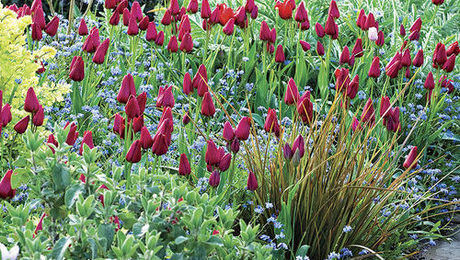
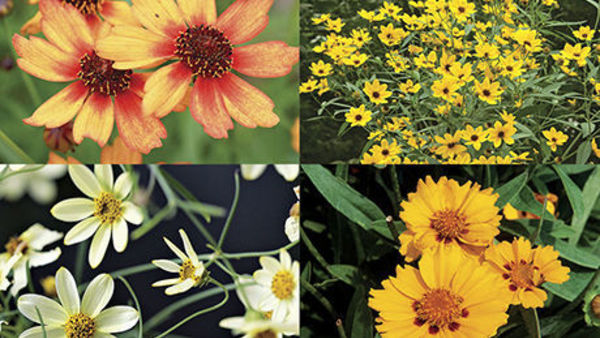















Comments
Log in or create an account to post a comment.
Sign up Log in